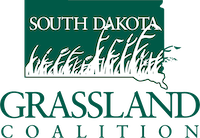The SD Grasslands Summit in Oacoma on March 18 and 19 featured several speakers and a panel focusing on the financial aspect of keeping grass right side up. Only 16% or about 98 million acres of the original North American grassland biome is still intact. A large percentage of those grasslands are privately owned, working lands. Helping grassland managers score a profit is an important part of sustaining that biome into the future. “Lack of economic information is a major obstacle to conservation success,” said Dirac Twidwell, Professor and Rangeland Ecologist at the University of Nebraska.
Economics in Agriculture
Victor Tuschen is the new SD USDA-NRCS ag economist. This is a new position intended to help producers make good financial decisions. His presentation on how to be economically profitable included what he called the GPS Method:
- 1. Know your current location—track all expenses and inventory, cash flow, winter feed costs, etc.
- 2. ID your destination—set goals such as improving water quality, planting cover crops and livestock protection. Identify the obstacles to getting there, consider alternatives to address concerns.
- 3. Ask for directions—free services and information are everywhere. Part of his job is to help identify those sources for producers. For the technically inclined, there are many new apps that help with record keeping and tracking expenses. A knowledgeable insurance agent and banker should be able to help as well.
Dave Koupal, Ag Manager/ Loan Officer with the Black Hills Credit Union and rancher gave a list of information that will help a producer’s lender be the best possible partner for them.
- 1. Good communication, the more often the better. Talk about the goals of your operation, the good and bad of what’s currently happening, opportunities that may come up, enterprise analysis and transition and estate plans.
- 2. A current balance sheet that includes inventory, other loans and fair pricing for your assets. An updated inventory should also be provided to your insurance agent.
- 3. Tax returns from the last three years. If your tax preparer sends them make sure a password is included. 4. Cash flow figures 5. Ideas that could generate income in the future such as easements, energy development, carbon credits, genetics that fit the ranch and operational flexibility are examples. A mortgage may be a factor in being able to sign some agreements. Your banker should be knowledgeable about that aspect of the law.
Transition and Succession
Don Mogen, CEO of Starion Bank in North Dakota, addressed transition and succession. Only 30% of ranches survive past the second generation and only 12% past the third generation. Some of the reasons why include lack of planning, mindsets that are locked into traditional ways of operation, the tendency to react to challenges rather than work toward goals, unhealthy family relations, and unsustainable debt loads are some of them. Shopping around for a banker that understands your operation may be in order, or you may have to educate them as many ag lenders today have little farm or ranch experience. This is especially true in regenerative agriculture where soil health practices are often more profitable long term instead of traditional short term enterprises.
A good financial plan is as important as a drought plan if you want to hang on to the ranch!
Source: March 2024 Newsletter
